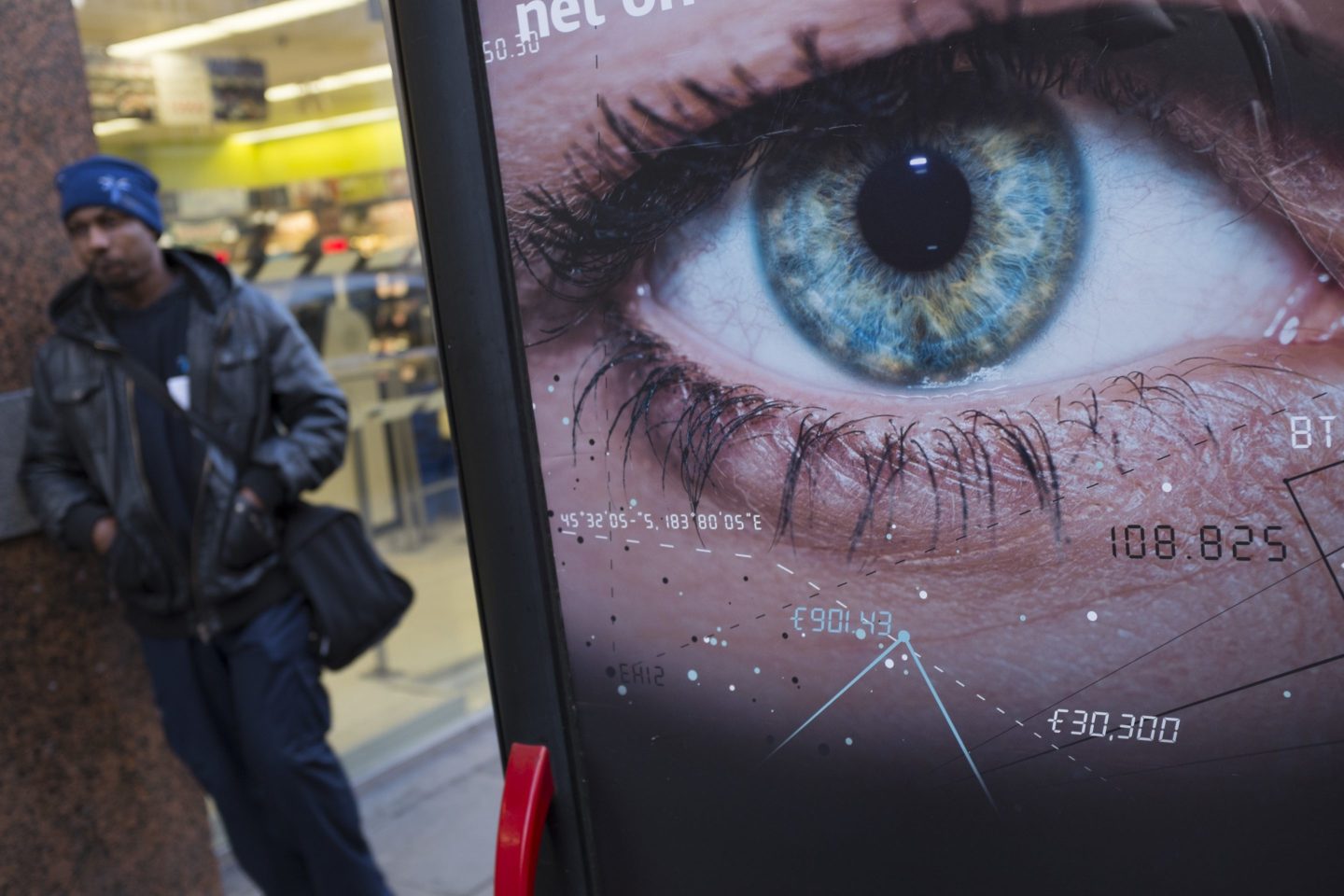Hello and welcome to Eye on AI. This week was a big one for AI research, and we’re going to start by diving into perhaps the most comprehensive attempt to interrogate the transparency of leading LLMs yet.
The Stanford Institute for Human-Centered AI released its Foundation Model Transparency Index, which rates major foundational model developers to evaluate their transparency. Driven by the fact that public transparency around these models is plummeting just as the societal impacts of them are skyrocketing, the researchers evaluated 100 different indicators of transparency across how a company builds a foundation model, how that model works, and how it’s actually used. They focused on 10 major foundation model developers—OpenAI, Anthropic, Google, Meta, Amazon, Inflection, AI21 Labs, Cohere, Hugging Face, and Stability—and designated a single flagship model from each developer for evaluation.
Eye on AI talked with one of the researchers behind the index to get a deeper understanding of how the companies responded to their findings, what it all means about the state of AI, and their plans for the index going forward, but first let’s get into the results. To sum it up, everyone failed.
Meta (evaluated for LLama 2) topped the rankings with an “unimpressive” score of 54 out of 100. Hugging Face (BLOOMZ) came in right behind with 53 but scored a notable 0% in both the overall “risk” and “mitigations” categories. OpenAI (GPT-4) scored a 48, Stability (Stable Diffusion 2) scored a 47, Google (PaLM 2) scored a 40, and Anthropic (Claude 2) scored a 36. Cohere (Command), AI21 Labs (Jurassic-2), and Inflection (Inflection-1) spanned the mid-30s to low 20s, and Amazon (Titan Text) scored a strikingly low 12, though it’s worth noting its model is still in private preview and hasn’t yet been released for general availability.
“We anticipated that companies would be opaque, and that played out with the top score of 54 and the average of a mere 37/100,” Rishi Bommasani, CRFM Society Lead at Stanford HAI, told Eye on AI. “What we didn’t expect was how opaque companies would be on critical areas: Companies disclose even less than we expected about data and compute, almost nothing about labor practices, and almost nothing about the downstream impact of their models.”
The researchers contacted all of the companies to give them a chance to respond after they came up with their first draft of the ratings. And while Bommasani said they promised to keep those communications private and wouldn’t elaborate on specifics like how Amazon responded to such a low score, he said all 10 companies engaged in correspondence. Eight of the 10 companies (all but AI21 Labs and Google) contested specific scores, arguing that their scores should be 8.75 points higher on average, and eventually had their scores adjusted by 1.25 points on average.
The results say a lot about the current state of AI. And no, it wasn’t always like this.
“The successes of the 2010s with deep learning came about through significant transparency and the open sharing of datasets, models, and code,” Bommasani said. “In the 2020s, we have seen that change: Many top labs don’t release models, even more don’t release datasets, and sometimes we don’t even have papers written about widely deployed models. This is a familiar feeling of societal impact skyrocketing while transparency is plummeting.”
He pointed to social media as another example of this shift, pointing to how the technology has become increasingly opaque over time as it becomes more powerful in our lives. “AI looks to be headed down the same path, which we are hoping to countervail,” he said.
AI has quickly gone from specialized researchers tinkering to the tech industry’s next (and perhaps biggest ever) opportunity to capture both revenue and world-altering power. It could easily create new behemoths and topple current ones. The “off to the races” feeling has been intensely palpable ever since OpenAI released ChatGPT almost a year ago, and tech companies have repeatedly shown us they’ll prioritize their market competitiveness and shareholder value above privacy, safety, and other ethical considerations. There aren’t any requirements to be transparent, so why would they be? As Bommasani said, we’ve seen this play out before.
While this is the first publication of the FMTI index, it definitely won’t be the last. The researchers plan to conduct the analysis on a repeated basis, and they hope to have the resources to operate on a quicker cadence than the annual turnaround most indices are conducted in or to mirror the frenetic pace of AI.
Programming note: Gain vital insights on how the most powerful and far-reaching technology of our time is changing businesses, transforming society, and impacting our future. Join us in San Francisco on Dec. 11–12 for Fortune’s third annual Brainstorm A.I. conference. Confirmed speakers include such A.I. luminaries asSalesforce AI CEO Clara Shih, IBM’s Christina Montgomery, Quizlet’s CEO Lex Bayer, and more. Apply to attend today!
And with that, here’s the rest of this week’s AI news.
Sage Lazzaro
sage.lazzaro@consultant.fortune.com
sagelazzaro.com
AI IN THE NEWS
Hugging Face confirms users in China are unable to access its platform. That’s according to Semafor. Chinese users have been complaining of issues connecting to the AI startup’s popular open-source platform since May, and it’s been fully unavailable in China since at least Sept. 12. It’s not exactly clear what prompted action toward the company, but the Chinese government routinely blocks access to websites it disapproves of. It could also be related to local regulations regarding foreign AI companies that recently went into effect.
Canva unveils suite of AI tools for the classroom. Just two weeks after Canva introduced an extensive suite of AI-powered tools and capabilities, the online design platform announced a suite of AI-powered design tools targeted specifically to teachers and students. The AI-powered tools will live in the company’s Canva for Education platform and include a writing assistant, translation capabilities, alt text suggestions, Magic Grab, and the ability to animate designs with one click.
Apple abruptly cancels John Stewart’s show over tensions stemming from his interest in covering AI and China. That’s according to the New York Times. The third season of The Promise was already in production and set to begin filming soon before Stewart was (literally) canceled. The details of the dispute over covering AI and China are not clear, but Apple’s deep ties with China have come under increased scrutiny lately as tensions with the country rise and the U.S. takes action to limit the transfer of AI technologies between the U.S. and China. The company is also starting to move some of its supply chain out of China.
China proposes a global initiative for AI governance. The Cyberspace Administration of China (CAC) announced the Global AI Governance Initiative, calling out the urgency of managing the transition to AI and outlining a series of principles and actions around the need for laws, ethical guidelines, personal security, data security, geopolitical cooperation, and an emphasis on a “people-centered approach to AI,” according to The Center for AI and Digital Policy newsletter Update 5.40. The document emphasizes the dual nature of AI as a technology that has both the ability to drive progress but also "unpredictable risks and complicated challenges.”
Eric Schmidt and Mustafa Suleyman call for an international panel on AI safety. The former Google CEO and DeepMind/Inflection AI cofounder published their call to action in the Financial Times. Arguing that lawmakers still lack a basic understanding of AI, they write that “calls to ‘just regulate’ are as loud, and as simplistic, as calls to simply press on.” They propose an “independent, expert-led body” inspired by the Intergovernmental Panel on Climate Change (IPCC), which is mandated to provide policymakers with “regular assessments of the scientific basis of climate change, its impacts and future risks, and options for adaptation and mitigation.”
EYE ON AI RESEARCH
Polling the people. Anthropic this past week published the results of an experiment around what it calls “constitutional AI,” a method for designing AI models so they’re guided by a list of high-level principles. The company paneled around 1,000 American adults about what sort of principles they think would be important for an AI model to abide by and then trained a smaller version of Claude based on their suggestions. They then compared the resulting model to Claude, which was trained on a constitution designed by Anthropic employees.
Overall, the results showed about a 50% overlap in concepts and values between the two constitutions. The model trained on the people’s constitution focused more on objectivity, impartiality, and promoting desired behaviors for the model to abide by rather than laying out behaviors to avoid. The people also came up with some principles that were lacking from Anthropic’s version, such as “Choose the response that is most understanding of, adaptable, accessible, and flexible to people with disabilities.” The model created with the people's constitution was also slightly less biased than the commercially available version, though the models performed similarly overall.
It’s also important to take note of Anthropic’s methodology. While the company said it sought a representative sample across age, gender, income, and geography, one factor noticeably missing is race. This is especially concerning as evidence has repeatedly shown that people of color are adversely affected by racial bias and accuracy issues in AI models.
FORTUNE ON AI
How Sam Altman got it wrong on a key part of AI: ‘Creativity has been easier for AI than people thought’ —Rachyl Jones
OpenAI’s winning streak falters with reported failure of ‘Arrakis’ project —David Meyer
Nvidia thought it found a way around U.S. export bans of AI chips to China—now Biden is closing the loophole and investors aren’t happy —Christiaan Hetzner
Sick of meetings? Microsoft’s new AI assistant will go in your place —Chloe Taylor
Why boomers are catching up with AI faster than Gen Zers, according to Microsoft’s modern work lead —Jared Spataro
How AI can help the shipping industry cut carbon emissions —Megan Arnold
Billionaire AI investor Vinod Khosla’s advice to college students: ‘Get as broad an education as possible’ —Jeff John Roberts
BRAINFOOD
Would you let Meta read your mind? The tech giant perhaps most synonymous with invading user privacy announced it reached an “important milestone” in its pursuit of using AI to visualize human thought.
Using a noninvasive neuroimaging technique called magnetoencephalography (MEG), Meta AI researchers “showcased a system capable of decoding the unfolding of visual representations in the brain with an unprecedented temporal resolution.” In other words, the system can analyze a person’s brain activity and then reconstruct visuals depicting what their brain is seeing and processing. While they only reached accuracy levels of 70% in their highest-performing test cases, the researchers note in their paper that this is seven times better than existing models.
The fact that the AI announcements coming out of tech companies in a single week range from “animate text with one click” to “decode and reconstruct human thought” shows how incredibly wide-reaching and powerful this technology is. It’s hard to imagine there’s a corner of society and humanity it won’t touch.
This is the online version of Eye on AI, Fortune's weekly newsletter on how AI is shaping the future of business. Sign up for free.












